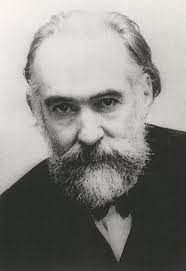
Gustave Guillaume (1883-1960) was a French linguist and philologist, originator of a linguistic theory known as “psychomechanics.” Deleuze makes use of this term several times in the conclusion to The Time-Image (262, 263, 264). Guillaume’s first major work was Le problème de l’article et sa solution dans la langue française [The problem of the article and its solution in the French Language] (Paris, Hachettect cie, 1919.), which was followed by Temps et verbe: Theorie des aspects, des modes et des temps [Tense and Verb: Theory of Aspects, Modes and Tenses] (Paris: Champion, 1929), which has become a classic text in linguistics.
“To study a language in circumstances as close as possible to the real circumstances of usage,” Guillaume wrote, “one should, like a speaker, start with the language in a virtual state and trace how the speaker actualizes that virtuality” (Temps et verbe, 121). In order to speak a word, we must call on the potentialities acquired with our mother tongue — both lexical and grammatical — to form the word’s meaning and to actualize its physical sign. For Guillaume, language consists of langue (“language”) and discours (“speech”), understood as an operative, potential-to-actual binary, and not as a static dichotomy like Saussure’s langue and parole.
A detailed analysis of Guillaume’s work can be found in Edmund Ortigues’ Le discours et le symbole (Paris: Aubier, 1962), which Deleuze cities in The Time-Image (330n1).